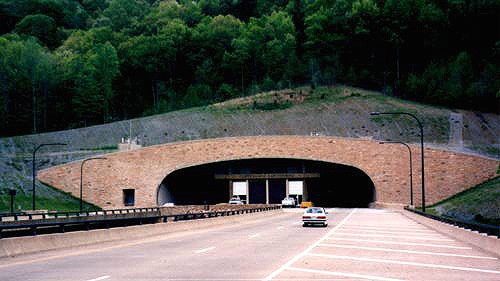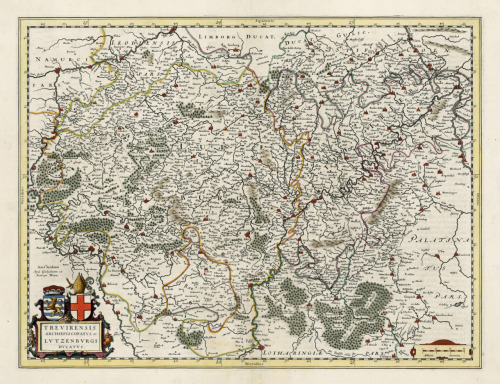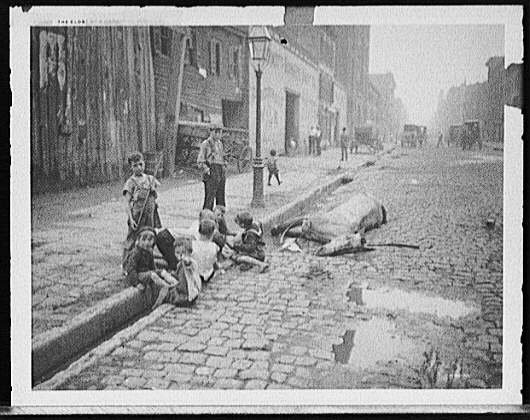Scientists, in their struggle to improve our understanding, have untangled the principal problems of biology and unveiled the secrets of life. However, the times when it was sufficient for a biologist to know only elementary arithmetic and graphs of functions are long gone. Today, they need much more advanced mathematics like linear and multilinear algebras, mathematical analysis, the theory of differential and functional equations, statistics and discrete mathematics. Branches of biology like genetics or ecology are considered as parts of mathematics. Mathematics also opens new possibilities for medicine. Mathematical models are used to understand our bodies and to find optimal treatment for diseases.
More and more mathematics is used in the social sciences like economics, psychology, sociology, demography, social epidemiology and criminology. Not surprisingly, mathematics is also trying to make its contribution in history, where it addresses a very serious problem of reliability of the accounts of historical events. How can we be sure that the historical events that we learn about in school or from books really took place? Maybe some of them are simply fairy tales that, because of some mysterious circumstances, are considered now to be historical facts.
History of the Global Chronology
The fundamental question that should be asked is what is the origin of our historical knowledge. We all learned our history at school and generally accepted it as a true description of the actual events. However, even in our lifetime some of the recent historical events that we witnessed are not always described in the way we remember them. How can we be sure that the description of the events that took place centuries ago is accurate? Moreover, why should we believe that these historical events really happened at the time and place that is allocated to them? In order to answer these questions we must look at the history of history.
The early historians (for example Thucydides, Herodotus, Ssu-ma Ch'ien and others) were describing history of small territories over short periods of time. Ancient and medieval manuscripts that are available today usually present accounts of events in separate countries over a time scale of no more than one or two centuries. The fundamental problem encountered by historians in 16th and 17th centuries working on reconstruction of the global history of mankind was putting together in chronological order all of the manuscripts, chronicles and other historical documents to obtain a unified and consistent account of all historical events. This was an extremely difficult problem for that time. The main obstacle was that most of the manuscripts were not dated, or used an unknown or archaic system of dating, and contained only a description of a sequence of successive events. It should be stressed out that the most of historical documents that we have today, related to ancient and medieval times, are not original but only copies made some time ago, often under suspicious circumstances.
The idea of reconstructing global history emerged during the late Renaissance. The official historical chronology, presently commonly acknowledged, was originated by the Italian theologian and scientist I. Scaliger (1540-1609). He determined the exact dates of the most important historical events like the Peloponnesian War, Trojan War, founding of Rome, etc., but did not prove none of his dates. His followers continued this work and it is commonly accepted that the official chronology was given its final shape by D. Petavius (1583-1652). It is strange that other historians, in spite of the scientific advantages, very rarely modified the dates of the basic historical events assigned by Scaliger and Petavius.
In summary, according to Scaliger, Petavius and their followers, the events of the ancient world took place from about 3,500 years B.C. till the fifth century A.D. As their results were never independently confirmed, there is an outstanding question of the credibility of this chronology. By the way, not all of the statements made by Scaliger turned out to be true, as for example, his geometrical proof of the quadrature of the circle , which he defended ferociously all his life.
Critics of the Traditional Chronology
Even among scholars, not all contemporaries of Scaliger and Petavius, supported their chronology. For example, in the sixteenth century D. Arcilla, a professor of Salamanca University in Spain, claimed that all ancient history was a fabrication made in the middle ages. The director of the French Royal Library, Jean Hardouin (1646-1729) declared that practically all the antiquities and ancient texts were created (or falsified) after 12th century. The most famous scientist of that epoch, Sir Isaac Newton (1642-1727), was also against the chronology of Scaliger and Petavius. Newton published a large monograph entitled "The Chronology of Ancient Kingdoms Amended," in which he re-dated key ancient events by shifting them several hundreds years forward. There were many more scientists, philologists, historians, and jurists who objected to the chronology of Scaliger and Petavius. We should also mention recent and contemporary critics of the conventional chronology in Germany, including W. Kammeier, H. Illig, U. Topper, H-U. Niemitz, G. Heinsohn, and C. Blss (see [13,14,15]).
Nicolai A. Morozov and His Version of Chronology
The first scholar who suggested new powerful methods to correct chronological mistakes, was prominent Russian scientist N.A. Morozov (1854-1946). He published a fundamental monograph composed of seven large volumes, entitled "Christ. History of Human Culture from the Standpoint of the Natural Sciences" (see [1]). Morozov analyzed in it the conventional chronology using the latest discoveries in mathematics, astronomy, linguistics, philology and geology. He suggested a new version of the global chronology and a historical reconstruction. According to N.A. Morozov all the ancient events occurred after 3rd century AD.
Anatoly T. Fomenko and His Version of Chronology
In 1970s at the Moscow State University, a group of young mathematicians undertook the task of the verification and further development of Morozov's research in global chronology. One of them, Professor A.T. Fomenko introduced several new methods of independent dating and after several years of investigation he proposed a new version of global chronology, which was even more radical that the version of N.A. Morozov. He claimed that the recorded history of mankind started not earlier than the year 900 AD, while the majority of historical events, which make our history, refer to the time after the year 1300 AD (see [2,3]).
The New Chronology
In collaboration with G.V. Nosovskij, A.T. Fomenko continued his work on the development of new independent scientific methods for dating of ancient events. In 1993-1996, completely new results were established by them on the chronology of Russia and China. Their work resulted in stating the New Chronology, which is a new concept of the global chronology and history. It is based on the chronological version of A.T. Fomenko, to which new proofs and improvements were introduced. It led to the further shifting of the "starting point" of the known history to the 11th century AD (see [6,7,8]).
We should mention an important pillar of this theory, which is the astronomical dating of the Ptolemy's Star Catalogue in "Almagest" obtained by A.T. Fomenko, V.V. Kalashnikov and G.V. Nosovskij (see [4]). In the conventional chronology the epoch of Ptolemy, who was the last great astronomer of the antiquity, is considered to be the second century AD. However, the analysis of vast amount of the astronomical information contained in his star catalogue proved that the only possible time of creation of this catalogue was from 7th to 13th century AD, which is at least 500 years later. Consequently, it is impossible that this astronomical data was collected in the second century. This result strongly contradicts the conventional chronology of Scaliger and Petavius, while it perfectly fits the New Chronology.
Methods of the New Chronology
It is an interesting question, how the above claims could be made and justified. In fact, this work started with constructing a large chronological table covering all periods of human history. Next, it was attempted to discover in it some unusual phenomena, contradictions and disagreements, simply something that could never happen. Apparently, this idea was not easy to carry out. Numerous heavy books devoted to the chronology are arranged in a frustrating manner (see [10,11]). There are no modern monographs presenting a detailed description of the global chronology, useless to even mention proofs of its correctness in principle.
A.T. Fomenko and his collaborators compiled a global chronology table using all available sources such as old chronicles, chronological tables, including the Blair's canonical chronological tables and the most recent monographs. In spite of the fact that the available data from different sources didn't always match, they were able to put together the global chronology enclosing almost the whole history of the mankind. This massive work could be done only with the use of computers.
From the point of view of mathematics, the chronology represent an object called a function. More precisely, we can write it as a function denoted by H(t, x1,x2), which depends on the three variables: t - the time of a historical event and (x1,x2) - the geographical coordinates (longitude and latitude) of the place where this event occurred, or we can simply say that its domain is the Cartesian product of numeric half line and the sphere. The values of the function H(t, x1,x2) represent the fragments of historical recordings describing this particular event.
The above Figure 1 illustrates the "chronology" function H. On the left hand side of Figure 1 the concentric spheres represent the domain of H. More precisely, the red arrow stands for the time axis where the points correspond to specific dates. For example, the inside coloured sphere illustrates events of the year 1320 at specific locations. The larger spheres on this figure correspond to the years 1415 and 1985. In this way, with every date in history we can associate a sphere on which the corresponding events are indicated. To every place on the Earth we can associate a ray originating at its centre to mark the dates of the events that occurred at this place. The books symbolize available descriptions of the historical events. The green arrows indicate the exact fragments of the available descriptions corresponding to certain concrete events. Briefly, the chronology is a database parameterized by points of the Cartesian product R+ x S2, i.e. the product of the half-axis R+ and the sphere S2. Naturally, this function is not convenient for mathematical analysis. Clearly the set of values of the function H does not have any natural mathematical structure. However, the information contained in the function H allows us, on the one side, to construct a variety of scalar (numeric) functions which can be easily analyzed with mathematical methods, and on the other side, to provide essential information on the nature of the historical events. An example of a simple scalar function, which can be easily extracted from the historical database, is the functions of the time-span of the reign of subsequent rulers belonging to a certain specific dynasty. Such a `dynasty' function can be illustrated by its graph, see Figure 2.
On the horizontal axis are placed the subsequent numbers of the consecutive rulers (or names of kings, emperors, etc.) and on the vertical axis is marked the length of the reign of the corresponding ruler. We will call such a sequence of rulers a numerical dynasty or simply a dynasty. The dynasty in the above example consists of 12 rulers.
There is another way to analyze chronicles by extracting numerical information from them. For example we can associate with a text X a sequence of integers, which are the numbers of words H(X(T)) in the chapter describing the year T (or simply the volume of a year fragment). We call H(X(T)) the volume function for X. There are also possibilities for other numerical functions like the number of references to the year T in subsequent years, the number of all names of historical persons listed in the text, or the frequencies showing how often these names were mentioned in the whole text. In his monograph [2], A.T. Fomenko used these functions to analyze similarities and differences between documents referring either to the same epoch or two different epochs. It is clear that for two different documents X and Y the functions H(X(T)) and H(Y(T)) can be completely different even if they refer to the same epoch. However, if the functions H(X(T)) and H(Y(T)) have local maxima practically at the same positions it means that these two chronicles describe the same historical epoch. A.T. Fomenko called it the principle of maximal correlation. This principle was empirically checked using the reliable historical data of 16th - 19th centuries, and its correctness was confirmed. Therefore, the locations of the maxima constitute the numerical data that can be associated with the text X in order to characterize the epoch it is referring to.
The methods of Fomenko are based on theoretical and numerical analysis of these and other similar functions describing historical data. In particular, he introduces a routine for distinguishing functions referring to different dynasties and defines a certain measure of distinctiveness between them (or a probability measure for distinctiveness). In simple words, he found a way to measure a `distance' between the above numerical functions (like for example dynasty functions) in a similar way to measuring distance between two different locations. Mathematicians say that in such a situation they are dealing with a metric space. The geometry of such metric spaces is definitely different from the geometry we learn in school, but the usual properties related to the measurement of distances are still valid in these spaces. If a distance between towns A and B is less than one kilometre we are justified to think that in fact A and B represent the same town. Similarly, if in the space of functions a distance between two dynasty functions is sufficiently small we may think that indeed they represent the same dynasty. These methods were extensively tested on the data referring to well documented. It was proved that if two dynasty functions (for 15 rulers) or volume functions were not related, the measure of distinctiveness between numerical functions associated with these dynasties was between 1 and 10-4. However, in the case of related events from the same epoch, the measure of distinctiveness was never higher than 10-8.
The work of Fomenko and his collaborators proves that the statistical analysis can be successfully applied to analyze the numerical data contained in historical documents. A.T. Fomenko and G.V. Nosovskij also developed several other statistical criteria for distinguishing or recognizing identical sequences of historical events. We should mention for example the method of detecting of chronological shifts based on the names distribution in chronicles and the method of relation matrices used to recognize duplicates and decompose chronicles into its source fragments (see [6]).
What is Wrong With the Traditional Chronology
It is difficult to imagine that two different dynasties could have identical or almost identical dynasty functions. The probability of such a coincidence is extremely small already for dynasties composed of 10 rulers. Nevertheless, the number of such coincidences, for even longer dynasties of 15 rulers, turns out to be unexpectedly large. N.A. Morozov, who noticed the coincidence between the ancient Rome and the ancient Jewish state, discovered the first examples of surprisingly identical pairs of dynasty graphs. A formal method to study such similarities was introduced by A.T. Fomenko (see the reference list in [2]).
There is another surprise, besides coincidence of the dynasty functions, the other numerical functions confirm with very high probability that these dynasties are indeed the same. It brings us to a suspicion that in fact we are dealing with repetitions in the conventional version of the history. Fomenko discovered dozens of strong coincidences, sometimes between three and more dynasties. But, there are no more such coincidences in the history of the better-documented epochs, for example starting from the 16th century.
As an example, we would like to discuss two dynasties, one the dynasty of the Holy Roman-German Empire (10th - 13th AD) and another one of the Jewish kings according the Bible (9th - 5th BC). On Figure 3, we represent the vertical time line with two graphs of reign durations on its opposite sides for comparison. On this chart, we start the dates for the dynasty of Jewish kings in the year zero, which is not a date according to some era but simply indicates the starting "zero" point for this dynasty. According to the Encyclopaedia Britannica, the beginning of this dynasty is around 922 B.C. Figure 3 was taken from A.T. Fomenko monograph [2].
There are many more examples of similar dynasty pairs in the conventional chronology. For instance, the parallel between the first period of the Roman episcopate in 141-314 A.D. and the second period of the Roman episcopate in 314-532 A.D. is shown in Figure 4.
On Figure 5, we present another pair of graphs, this time without annotations. All these graphs were also taken from the monograph [2].
These parallels suggest that the traditional history of ancient times consist of multiple recounts of the same events scattered in many locations at various times. The first scientist who realized it was N.A. Morozov (see [1]). Further progress was made by A.T. Fomenko who succeeded to decipher the principle structure of these duplicates in Roman and Biblical history (see [2]). On Figure 6, we show a graphical representation of his result related to the Roman and European history. The chronological blocks annotated by the same letters (what we also emphasised by adding colours) represent duplicates in the conventional chronology.
What Does Analysis of Astronomical Data Confirm?
One of the most important and convincing methods used for dating of historical events is the astronomical dating. For instance, the accurate astronomical computations indicate that the Peloponnesian war took place not in the 6th century BC, as it is assumed by the conventional chronology, but in the 11th century AD, or even later (see [2], Vol.1, pp. 20-22). A very important example was already mentioned; it is the dating of star catalogue in the Almagest (see [4]).
During the recent years a significant progress was done in the old problem of decoding and dating of ancient Egyptian zodiacs. It was discovered that the principal structure of a typical Egyptian zodiac was much more elaborated and complex than it was assumed before. In fact, the amount of the astronomical information contained in such a zodiac is completely sufficient not only to accurately calculate its date, but also to determine its correct decoding (see [11,12]).
Egyptian zodiac is nothing else than a symbolic representation of astronomical objects inside the zodiacal belt. One of the most famous examples is the Round zodiac from the Denderah temple in Egypt. On Figure 7 we show a drawing of this zodiac. We used colours to indicate figures with different types of astronomical meaning.
Let us briefly explain the structure of an Egyptian zodiac (we refer to [11,12] for more details). It was discovered in [11,12] that an Egyptian zodiac presents an astronomical description of the whole calendar year during which the main date occurred. This date is encoded in the zodiac by its main horoscope. On Figure 7, the main horoscope on the Round zodiac is marked in yellow. Four solstices and equinox days, belonging to the same year, were described by partial horoscopes. In our example these horoscopes are marked in light-blue (see Figure 7). There also could be other astronomical scenes present (see the symbols marked in green on Figure 7). The whole structure of an Egyptian zodiac is illustrated on Figure 8.
The results of astronomical dating of Egyptian zodiacs sharply contradict the conventional chronology (see [11,12]). For example the final astronomical solution for the main date on the Round Denderah zodiac was the morning of March 20, 1185 AD. Let us mention that in the same Denderah temple there was another large zodiac, usually called the Long Denderah zodiac. The date shown on this zodiac turned out to be April 22-26, 1168 AD. These two dates suggest that the Denderah temple was commemorating some events that occurred in 12th century AD. Of course, it completely contradicts the conventional chronology, but perfectly agrees with the New Chronology. The situation with other Egyptian zodiacs is even "worse," because it was proved that their dates in case of temple zodiacs range from the 12th to 15th century, and for some zodiacs in tombs and on coffins, they are even later.
What Critics of the New Chronology Say?
We will discuss some of typical arguments against the New Chronology. One of the most popular arguments in support of the conventional chronology is that the carbon-14 dating method supports it. But in fact it is not true. The carbon-14 method, which was discovered by Willard Libby, is based on the measurement of the radiocarbon level in organic samples. It assumes essentially uniform level of the isotope carbon-14 in every living material, but it is now clear that carbon-14 was never homogeneously distributed. In fact, in order to improve its "accuracy," the carbon-14 method was calibrated using samples of "known" age. It was done by constructing the so-called calibration curves, which are dependent on the conventional chronology. That means the carbon-14 dating method is secondary and is not able either confirm or discard any chronological theory. In addition, the errors induced by this method exceed all reasonable time intervals. We would like to point out that if the global chronology was changed, the carbon-14 dating method would also work nicely with the new dating system. It is not possible to present here a complete discussion of this complicated problem (we refer the reader to [2], Vol.1, pp. 133-136, [3], Vol.1, pp. 184-214, and [13]).
There are other arguments, of different type, claiming that there is nothing abnormal in coincidence of dynasty functions for different dynasties. For instance, we know that the probability of having winning lottery is very small but still there are communities that have one or more lottery winners. So, even very unlike events could happen. Critics of the New Chronology often mention that biographies of certain rulers, like Napoleon and Hitler (both dictators) are quite similar, so by applying the method of Morozov and Fomenko we should consider them to be the same person and ultimately make a senseless statement that the first 20 years of the 19th century are simply the years thirties and forties of the 20th century. There are many more similar arguments, but all of them miss the point that extremely rare events only happen in large samples. For example, although the chances of having a winning lottery ticket are extremely small, nevertheless the probability that somebody wins is one. But, this is not the case with the unrelated dynasty functions, for which the coincidence in the whole sample is even less probable than the coincidence of two random fingerprints.
There is also a claim that the "strange" coincidences between dynasty functions could be removed by making appropriate corrections of the historical data. However, even with modified dates the probability arguments still hold.
Regarding the archaeological dating, we should point out that it is closely dependent on the conventional chronology. The usual dating procedure in archaeology is based on the comparison of the excavated objects with objects already dated. In this procedure, finding some objects of identifiable style or origin can lead to a conclusion of the age of the whole site. The whole process is highly subjective and cannot be considered as a proof of the conventional chronology.
References
|
|
N.A. Morozov, Christ. The History of Human Culture from the Standpoint of the Natural Sciences). (In Russian), Moscow and Leningrad. 1926-1932, vols. 1-7. Second edition, Kraft \& Lean, Moscow, 1997-1998, vols. 1-7 (8 books).
|
|
|
A.T. Fomenko, Empirico-Statistical Analysis of Narrative Material and Its Applications to Historical Dating. Volume 1: The Development of the Statistical Tools. Volume 2: The Analysis of Ancient and Medieval Records. Kluwer Academic Publishers. 1994.
|
|
|
A.T. Fomenko, New Methods of Statistical Analysis of Historical Texts. Applications to Chronology, Vol. 1-3. (In Russian). In the series: Russian Studies in Mathematics and Sciences. Scholarly Monographs in the Russian Language. Vol. 6-7. The Edwin Mellen Press. USA. Lewiston. Queenston. Lampeter. 1999.
|
|
|
A.T. Fomenko , Kalashnikov V.V, Nosovskii G.V. Geometrical and Statistical Methods of Analysis of Star Configurations. Dating Ptolemy's Almagest. CRC Press. 1993, USA.
|
|
|
A.T. Fomenko, G.V. Nosovskij, The New Chronology and Concept of Ancient Russian, English and Roman History." (In Russian). - Moscow, Moscow University Press, 1995, 1996.
|
|
|
A.T. Fomenko, G.V. Nosovskij, Empire. (Russia, Turkey, China, Europe, Egypt. New Mathematical Chronology of Antiquity). (In Russian). - Moscow, "Factorial", 1996. New editions in 1997, 1998, 1999.
|
|
|
A.T. Fomenko, G.V. Nosovskij. "Mathematical Chronology of the Biblical Events." (In Russian). - Moscow, Nauka, 1997.
|
|
|
A.T. Fomenko, G.V. Nosovskij. "Reconstruction of General History. New Chronology." (In Russian) - Moscow, Publishing Company "Delovoi' Express", 1999, 2000.
|
|
|
E. Bickerman, Chronology of the Ancient World. Thames & Hudson, London, 1968.
|
|
|
J. Blair, Blair's Chronological and Historical Tables from the Creation to the Present Time etc. G.Bell & Sons, London, 1882.
|
|
|
A.T. Fomenko, G.V. Nosovskij, New Chronology of Egypt. Astronomical Dating of the Egyptian Antiquities. (In Russian), Moscow, Veche 2001.
|
|
|
A.T. Fomenko, T.N. Fomenko, W.Z. Krawcewicz, G.V. Nosovskij, Mysteries of the Egyptian Zodiacs and Other Riddles of Ancient History. To appear.
|
|
|
Christian Blss, Hans-Ulrich Niemitz, C14-Crash. (Das Ende der Illusion mit Radiokarbonmethode und Dendrochronologie datieren zu k\"onnen). Mantis Verlag, Gr\"afelfing, 1997.
|
|
|
Wilhelm Kammeier, Die Flschung der deutschen Geschichte, Adolf Klein Verlag, Leipzig, 1935.
|
|
|
Wilhelm Kammeier, Die Wahrheit ber die Geschichte des Sptmittelalters, Verlag fr ganzheitliche Foeschung, Wobbenbhl, 1979.
|
|
|
Isaac Newton, The Chronology of Ancient Kingdoms Amended, London 1728.
|














